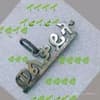Podcast
Questions and Answers
What is the definition of cartography?
What is the definition of cartography?
- The study of geographic data
- The history of ancient civilizations
- The practice of creating maps
- The study and practice of creating maps, which are visual representations of geographic data (correct)
What type of map displays specific data or information?
What type of map displays specific data or information?
- Navigational Map
- Thematic Map (correct)
- Reference Map
- Topographic Map
What is a map projection?
What is a map projection?
- A way of representing the curved surface of the Earth on a flat surface (correct)
- A way of measuring distances on a map
- A way of creating a 3D model of the Earth
- A way of creating a thematic map
What is the main advantage of the Mercator Projection?
What is the main advantage of the Mercator Projection?
What type of map scale shows a small area in great detail?
What type of map scale shows a small area in great detail?
What is a Representative Fraction (RF)?
What is a Representative Fraction (RF)?
What is the main purpose of a Cognitive Map?
What is the main purpose of a Cognitive Map?
What is a common use for a Navigational Map?
What is a common use for a Navigational Map?
What is the origin of the word 'cartography'?
What is the origin of the word 'cartography'?
What is the main advantage of the Gall-Peters Projection?
What is the main advantage of the Gall-Peters Projection?
Flashcards are hidden until you start studying
Study Notes
Cartography
Definition and History
- Cartography is the study and practice of creating maps, which are visual representations of geographic data
- Cartography has a long history, dating back to ancient civilizations such as the Babylonians, Greeks, and Romans
- The word "cartography" comes from the Greek words "chartis" (map) and "graphia" (writing)
Types of Maps
- Topographic Maps: show relief, elevation, and other physical features of an area
- Thematic Maps: display specific data or information, such as climate, population, or economic activity
- Reference Maps: show the location of features, such as cities, roads, and boundaries
- Navigational Maps: designed for navigation, such as aeronautical or nautical charts
- Cognitive Maps: mental maps that people use to understand and navigate their surroundings
Map Projections
- A map projection is a way of representing the curved surface of the Earth on a flat surface
- Mercator Projection: a cylindrical projection that preserves angles and shapes well, but distorts size and distance near the poles
- Gall-Peters Projection: a cylindrical projection that preserves area and shape, but distorts angles and distance
- Azimuthal Projection: a projection that preserves angles and shapes well, but distorts size and distance
Map Scales
- Large Scale: a scale that shows a small area in great detail (e.g. 1:10,000)
- Small Scale: a scale that shows a large area in less detail (e.g. 1:1,000,000)
- Scale Types: there are three types of scales:
- Representative Fraction (RF): a ratio of the distance on the map to the corresponding distance in reality
- Verbal Scale: a written description of the scale (e.g. "one inch equals one mile")
- Graphic Scale: a diagram that shows the relationship between the map distance and the real-world distance
Cartographic Tools and Techniques
- GIS (Geographic Information System): a computer-based system for capturing, storing, analyzing, and displaying geographically referenced data
- Remote Sensing: the acquisition of data about the Earth's surface through the use of sensors that are not in direct physical contact with the object or area being observed
- Cartographic Software: software used to create, edit, and analyze maps, such as ArcGIS, QGIS, and Google Earth
Cartography
Definition and History
- Cartography is the study and practice of creating maps, which are visual representations of geographic data
- Cartography has a rich history dating back to ancient civilizations such as the Babylonians, Greeks, and Romans
- The term "cartography" originates from the Greek words "chartis" (map) and "graphia" (writing)
Types of Maps
- Topographic Maps: Display relief, elevation, and other physical features of an area
- Thematic Maps: Show specific data or information, such as climate, population, or economic activity
- Reference Maps: Display the location of features, such as cities, roads, and boundaries
- Navigational Maps: Designed for navigation, such as aeronautical or nautical charts
- Cognitive Maps: Mental maps that people use to understand and navigate their surroundings
Map Projections
- A map projection is a way of representing the curved surface of the Earth on a flat surface
- Mercator Projection: A cylindrical projection that preserves angles and shapes well, but distorts size and distance near the poles
- Gall-Peters Projection: A cylindrical projection that preserves area and shape, but distorts angles and distance
- Azimuthal Projection: A projection that preserves angles and shapes well, but distorts size and distance
Map Scales
- Large Scale: A scale that shows a small area in great detail (e.g., 1:10,000)
- Small Scale: A scale that shows a large area in less detail (e.g., 1:1,000,000)
- Scale Types: Three types of scales exist: • Representative Fraction (RF): A ratio of the distance on the map to the corresponding distance in reality • Verbal Scale: A written description of the scale (e.g., "one inch equals one mile") • Graphic Scale: A diagram that shows the relationship between the map distance and the real-world distance
Cartographic Tools and Techniques
- GIS (Geographic Information System): A computer-based system for capturing, storing, analyzing, and displaying geographically referenced data
- Remote Sensing: The acquisition of data about the Earth's surface through the use of sensors that are not in direct physical contact with the object or area being observed
- Cartographic Software: Software used to create, edit, and analyze maps, such as ArcGIS, QGIS, and Google Earth
Studying That Suits You
Use AI to generate personalized quizzes and flashcards to suit your learning preferences.





